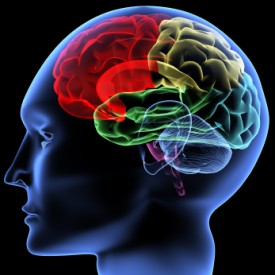Kinesthetic Learning Strategies for Various Subjects
We have looked at some general kinesthetic learning strategies that can really benefit tactile learners. But how can we apply these in the context of specific subjects?
Here we will explore some learning strategies for students of the kinesthetic learning style that can help them master material in different areas.
Language
Writing and Spelling With Tactile Sensations
The study of writing and spelling can be translated through the sense of touch in creative ways. Learners can be asked to trace out letters and numbers, both with eyes open and closed, on textured surfaces that they can feel. This can be done using existing textured materials, such as sandpaper. Or, instead, textured materials can be created for this purpose, for example, by writing out words in glue and then sprinkling textured material over it so that it dries in a pattern that can be felt.
Also, moveable models of letters and numbers can be used, allowing the learner to physically arrange them in different patterns as desired.
Representing Verbal Concepts through Movements
Hops, jumps, claps or other motion can be used to demonstrate, often in a very fun manner, concepts like numbers and patterns of syllables and points of emphasis in the pronunciation of words.
Interacting with People, Places and Things to Reinforce Names and Labels
Words for people, places and things can be more deeply internalized by pairing them, as much as possible, with what they actually refer to while saying or writing them. Ideally, the kinesthetic learner can review each label while engaging and interacting with the actual person, place or thing that it names. Otherwise, a representation, such as a picture, replica or diagram can be used.
The learner can test their knowledge either by being presented with the actual item and being asked to name it or being given a name and asked to choose the item from a group. Where appropriate, physically touching and manipulating the objects in question can be helpful.
Role Playing and Cooperative Projects for Language Practice
Kinesthetic learners best learn language by actually using it within active scenarios. Whatever aspect of language is being studied, one of the best kinesthetic learning strategies is to create and have students participate in sketches that involve relevant dialogue or design projects in which they make something together and, in the process, are prompted into discussions that involve words, phrases and concepts drawn from current lessons.
Literature
Reinforce what students are learning about in their reading by having them, as much as possible, act out scenes and stories, whether these come directly from the works being studied or are developed to help illustrate the lessons of those works.
Math
Math is, by its nature, extremely abstract. So it is important to use kinesthetic learning activities to make its ideas and principles concrete. There are various ways to do this:
- Toys or tools, which students can see, touch and arrange, can be used to illustrate counting and mathematical functions like addition, subtraction, multiplication and division. Or you can use an abacus, the tool originally designed for just this purpose.
- Movements like jumping, clapping and singing can be used to reinforce patterns and make mathematical ideas more memorable.
- Students can actually walk on large number lines while discussing mathematical concepts to physically experience the relationships between numbers.
History
Have students act out historical scenes in role plays. As much as possible, bring in actual people, show them actual objects or take them to actual places associated with historical events. When this is not possible, use images and models instead.
Geography
Use a globe, preferably big enough for learners to walk around, touch and move to experience earth’s landscape and the relationships and distance between places.
Biology
Kinesthetic learning strategies in the area of biology revolve around letting students, when possible, interact with specimens of the life forms being studied. When this is not possible, use replicas.
Chemistry
Chemistry deals with entities too small to directly experience so models are crucial. Ball-and-stick models are so wonderful for this that it is almost as if they were designed with tactile learners in mind. In addition, whenever possible, bring the material being studied to life through laboratory experiments and demonstrations.
Art
Art is one of those subjects where, finally, the kinesthetic student feels at home. It would take an entire article to scratch the surface of the many means of engaging kinesthetic learners in art. With creativity, you can find infinite ways to get students using motion and touch, as well as the rest of their senses, to explore artistic realms.
Drama
Drama is another subject that really lends itself to kinesthetic learning. It inherently involves moving, interacting, speaking and other forms of expression – all things that are very natural to kinesthetic learners. One dramatic requirement that may challenge these students is memorizing lines. Many of the principles discussed earlier regarding learning language can be used to help these students better remember their scripts.
While we have not covered kinesthetic learning strategies for every possible subject, hopefully this has provided you with a storehouse of ideas that you can adapt and then apply with material in any area to make it friendlier and more accessible to the kinesthetic learner.
If you benefited from this post and want to contribute, please
What are the Best Kinesthetic Learning Strategies? The Kinesthetic Learner vs. Tactile Learners

Great information.
The information is very useful to teachers. I would like to get more information for learners with visual impairments in the classroom.
Elina,
Very glad you find the information helpful. Sorry that we don’t have any specific information about visually-impaired learners on this site. But many of them might benefit from kinesthetic learning approaches.
[...] style: Kinesthetic Subject: History Project: Create a Screenplay Your kinesthetic learner might have difficulties sitting still and understanding a long, detailed [...]